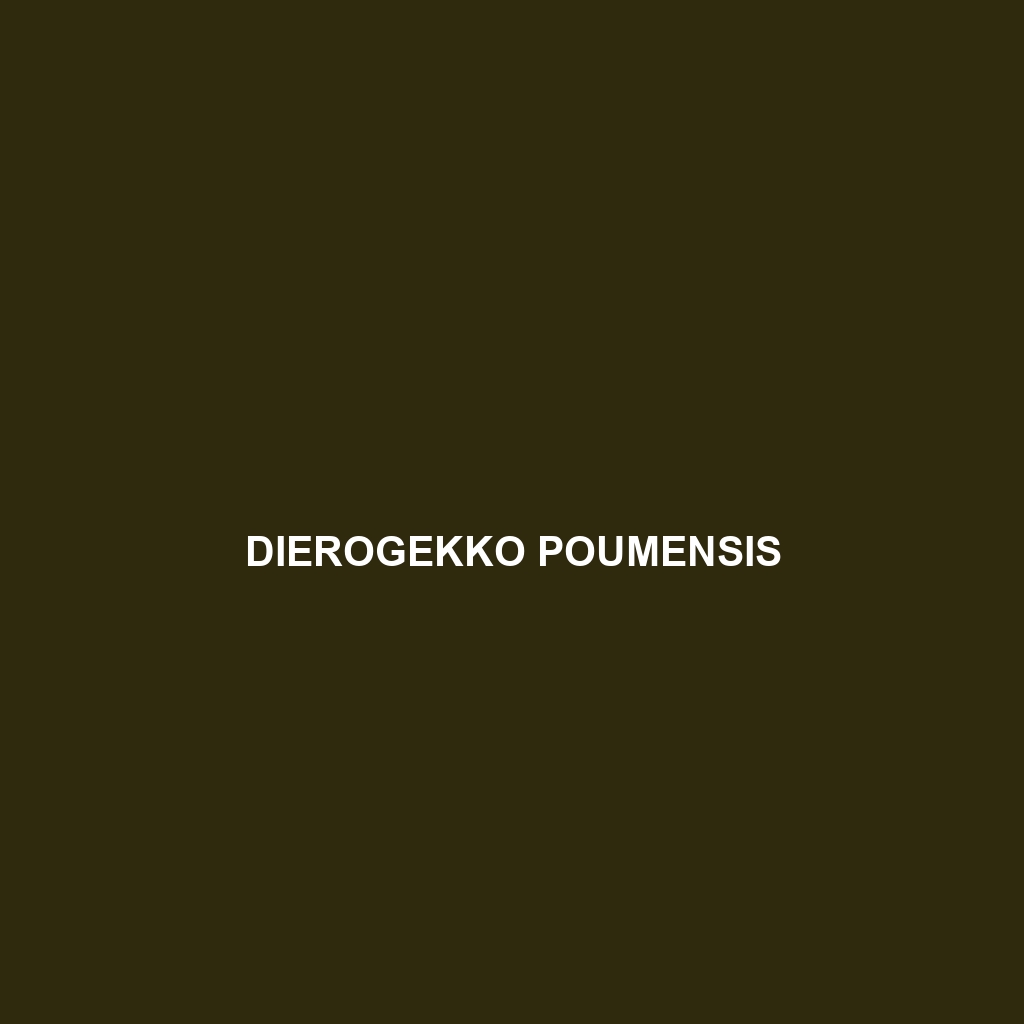Species Description: Dierogekko nehoueensis
Common Name: Dierogekko nehoueensis
Scientific Name: Dierogekko nehoueensis
Habitat
Dierogekko nehoueensis is primarily found in the tropical forests of New Caledonia, especially on the isle of Nehoué. This species thrives in humid, dense vegetation, often residing in rocky crevices and trees, where it can camouflage itself effectively. The specific environmental conditions, such as temperature and moisture levels, play a critical role in maintaining its populations in these regions.
Physical Characteristics
This species exhibits a modest size, typically growing up to 10 cm in length. Its coloration is predominantly a mix of brown and green hues, allowing it to blend seamlessly with its surroundings. Notable features include a flattened body and extensive toe pads that enhance its climbing ability. The distinctive markings on its skin can vary widely, providing crucial identification markers for researchers and enthusiasts alike.
Behavior
Dierogekko nehoueensis is known for its nocturnal habits, primarily becoming active after dusk. During this time, it engages in foraging and territorial displays. Males often exhibit aggressive behaviors during mating seasons, using vocalizations and body postures to establish dominance. Its ability to remain still for extended periods aids in evading predators, making it a fascinating subject for behavioral studies.
Diet
This gecko primarily feeds on small insects and other invertebrates. Its diet is diverse, including crickets, beetles, and spiders, which it hunts using its keen eyesight and agility. The adaptability in its feeding habits allows D. nehoueensis to thrive in varying environmental conditions, effectively utilizing the resources available within its habitat.
Reproduction
The reproductive season for Dierogekko nehoueensis typically occurs during the warmest months of the year. Mating rituals often involve elaborate displays, where males showcase their physical prowess to attract females. After mating, females lay clutches of 1-2 eggs in hidden locations, with the incubation period lasting several weeks. The hatchlings are independent from birth, exhibiting similar physical characteristics to adults but in smaller sizes.
Conservation Status
Currently, Dierogekko nehoueensis is classified as vulnerable due to habitat loss and environmental changes. Conservation efforts are essential to protect its natural habitats and ensure its survival in the face of increasing threats from deforestation and climate change.
Interesting Facts
One fascinating aspect of Dierogekko nehoueensis is its remarkable ability to change its posture and coloration in response to threats, effectively enhancing its camouflage. Additionally, its adaptability to various microhabitats highlights its resilience, making it a subject of interest among herpetologists.
Role in Ecosystem
Dierogekko nehoueensis plays a vital role in its ecosystem as both a predator and prey. By controlling insect populations, this species aids in maintaining ecological balance. Furthermore, it serves as a food source for larger predators, contributing to the biodiversity and complexity of its habitat.
